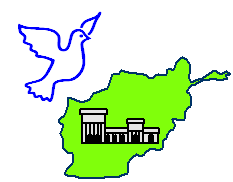
Problems We Are Addressing in Afghanistan
![]()

Solution
Extent of Problems in Afghanistan
Afghanistan has been in a state of war for some 23 years. During this time, most of the country�s infrastructure and institutions have collapsed; an entire generation has grown up in a state of conflict. Today,
-
50% of the Afghan population is less than 18 years of age with almost no education.
-
Children in Afghanistan have been neglected:
One in three Afghan children (over 1 million) is an orphan.
One out of four Afghan children dies before the age of five.
Over 500,000 are disabled.
Over 400,000 children are amputees, because of land mines.
Over one million Afghan children are suffering from post-traumatic stress syndrome.
-
80% of the population of Afghanistan is categorized as "poor".
-
60% of the population consists of females and under the Taliban regime; many of them suffered enormous cruelties, inequalities and human rights abuses.
-
Afghanistan has the highest proportion of disabled people in the world.
-
Before the Taliban, Afghanistan was one of the top two opium producing nations in the world, now with the fall of the Taliban, opium production is beginning once again because of a lapse in control.
-
Alternatives and opportunities for people are very limited because (1) the know-how to create successful business enterprises is rare and (2) support systems (such as education) to assist and promote positive and socially conscious activities are limited.
ASBDI's Solution to Issues and Problems
To help solve some of these problems, the Afghan Small Business Development Institute (ASBDI), Inc. is working directly with people in Afghanistan to provide them with small business startup and management services � assisting people achieve quick results with small investments.
Specifically, the organization is focused on providing credit (micro-loans) and access to education and trade development for people to start their own businesses, thereby contributing to their current livelihoods.
Women are a primary focus (especially widows and the poor) � providing them with opportunities to get off the streets and provide for their children. Women have been forced to make a living through prostitution, begging and working as servants. Since 1996 when the Taliban regime took power, women were prevented from professional work and education resulting in hopelessness and increased suicide rates.
Other key groups that need assistance are the disabled and young (teenage) men and women who have been left behind in their education. Afghanistan's disabled population needs access to opportunities specifically designed for their participation. The young population are extremely vulnerable to abuse and can be easily swayed into dysfunctional life-styles. These young will grow up to be the future adults of Afghanistan and they will either be able to assist Afghanistan move forward towards a more civil society or keep it lagging behind as one of the world's poorest and most deprived nations.
Since traditional education (Kindergarten through twelfth grade and college) is a long and drawn out investment process, supplemental processes (vocational and micro-enterprise development) are needed to meet the current needs of the Afghan population in the short-term. People�s current day-to-day lives need to be enhanced so that an entire generation is not lost to the last 23 years of decadence.
Examples of Typical Types of Projects
Most Afghans do not have access to capital or the know-how to start and operate a self-sustaining business operation. Many Afghans who are trying to do business under current conditions face strategy and distribution channel problems, for example:
Bags of pistachio are distributed to hundreds of villagers who use their hands and teeth (no tools at all) to break the shells and then crush them to finer products to be shipped to Europe and the United States. Each individual earns only pennies for their work and usually has health problems such as teeth decay as a result of the work.
Our assistance in this situation would include: (a) advice on improving the process of handling the pistachios, (b) providing capital to purchase tools, and (c) assisting with the establishment of direct links between producers and buyers, eliminating the moneymen in between who reap most of the profits.
Mohair is produced and collected into bags, they are then sold to Iranian merchants, who then take them to Belgium for processing (cleaning, sorting), ultimately ending up in the United States for sale. Everyone in the supply chain makes profits while the original owner is left with very little to show for his/her production.
The owner can accomplish many of the intermediary steps in the supply chain up front if he/she was aware of the requirements of the final buyer. For example, U.S. Department of Agriculture / Commerce guidelines can be followed to prepare the products and then they can be directly shipped to the buyer, thereby, allowing the seller to keep more of the profits.
There are numerous opportunities for people to earn and support themselves using their existing skills; however, the resources and commitment to support these entrepreneurial activities is limited to non-existent. The Afghan Small Business Development Institute, Inc. has been approached to provide funding, expertise and assist with the establishment of channels for the development of businesses for:
-
Animal products processing and marketing (e.g., mohair, sheep skin, etc.),
-
Dried and fresh fruits and nuts (e.g., pistachio),
-
Afghan Carpets,
-
Textiles,
-
...and many others...
![]()
Home | Contact
An Equal Opportunity Employer and Program Administrator
Copyright © 2003-2025 Afghan Small Business Development Institute, Inc.